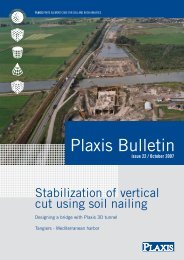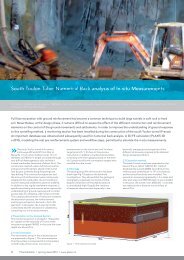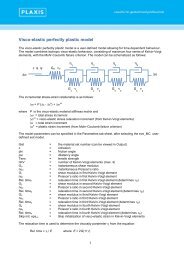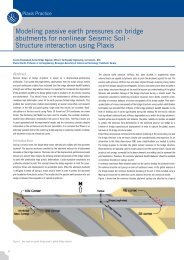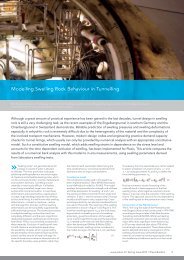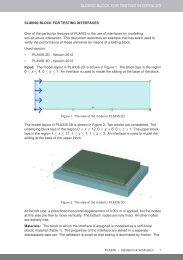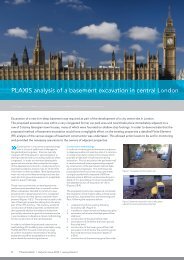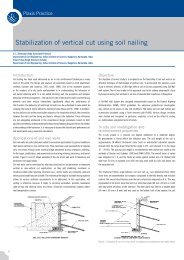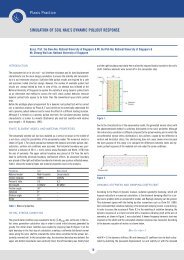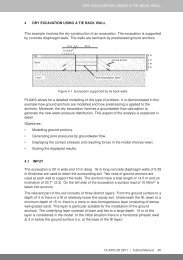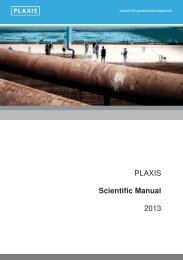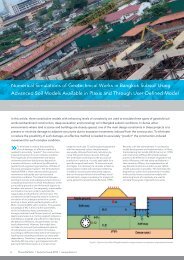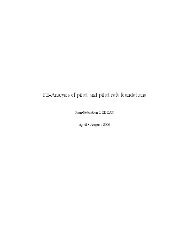PLAXIS LIQUEFACTION MODEL UBC3D-PLM - Knowledge Base
PLAXIS LIQUEFACTION MODEL UBC3D-PLM - Knowledge Base
PLAXIS LIQUEFACTION MODEL UBC3D-PLM - Knowledge Base
- No tags were found...
You also want an ePaper? Increase the reach of your titles
YUMPU automatically turns print PDFs into web optimized ePapers that Google loves.
to an initial rapid evolution of the excess pore pressures in deeper depths.The effect of the confining pressure in the cyclic resistance of the soil has tobe included in a future reformulation. It can finally be seen that the residualacceleration after the first 10 seconds influences more the post-liquefactionsoil behaviour.Figure 3.6 presents the stress path in p ′ − q stress space reproducedfor a stress point at 13.1 m depth. The stress path does not start from theisotropic axis as expected. At Point (a) the accumulated stress path touchesthe peak stress level defined by the input peak friction angle. The secondaryyield surface is deactivated and the primary yield surface is solely used forthe rest of the test. The densification rule is finally not activated. At Point(b) dilation is predicted by the model and negative excess pore pressures(compression) are generated during the test. This process slows down theevolution of the excess pore pressures during dynamic loading.Figure 3.7 presents the stress path in a p ′ − q stress space for a stresspoint at 24.8 m depth. Primary loading initially occurs at Point a andthis causes a rapid evolution of the excess pore pressure which is presentedbefore. The plastic shear modulus during primary loading is not influencedby the effective confining pressure in this high depth, due to the limitationin the <strong>UBC3D</strong>-<strong>PLM</strong> formulation. After a full cycle that the stiffness of theprimary yield surface is used, for half a cycle the densification rule is usedtill the stress path touches the peak stress level at Point (b). After that thesecondary yield surface is deactivated and the primary yield surface is usedtill the end of the test.Figure 3.8 presents the stress path in p ′ − q stress space for a stresspoint at 30.8 m depth. At Point (a) the primary yield surface is used whichpredicts a very rapid evolution of excess pore pressure caused by the absenceof the stress densification rule. At Point (b) the densification rule is activatedduring the expansion of the secondary yield surface. This slows down theevolution of the pore pressures. At Point (c) the primary yield surface is38



